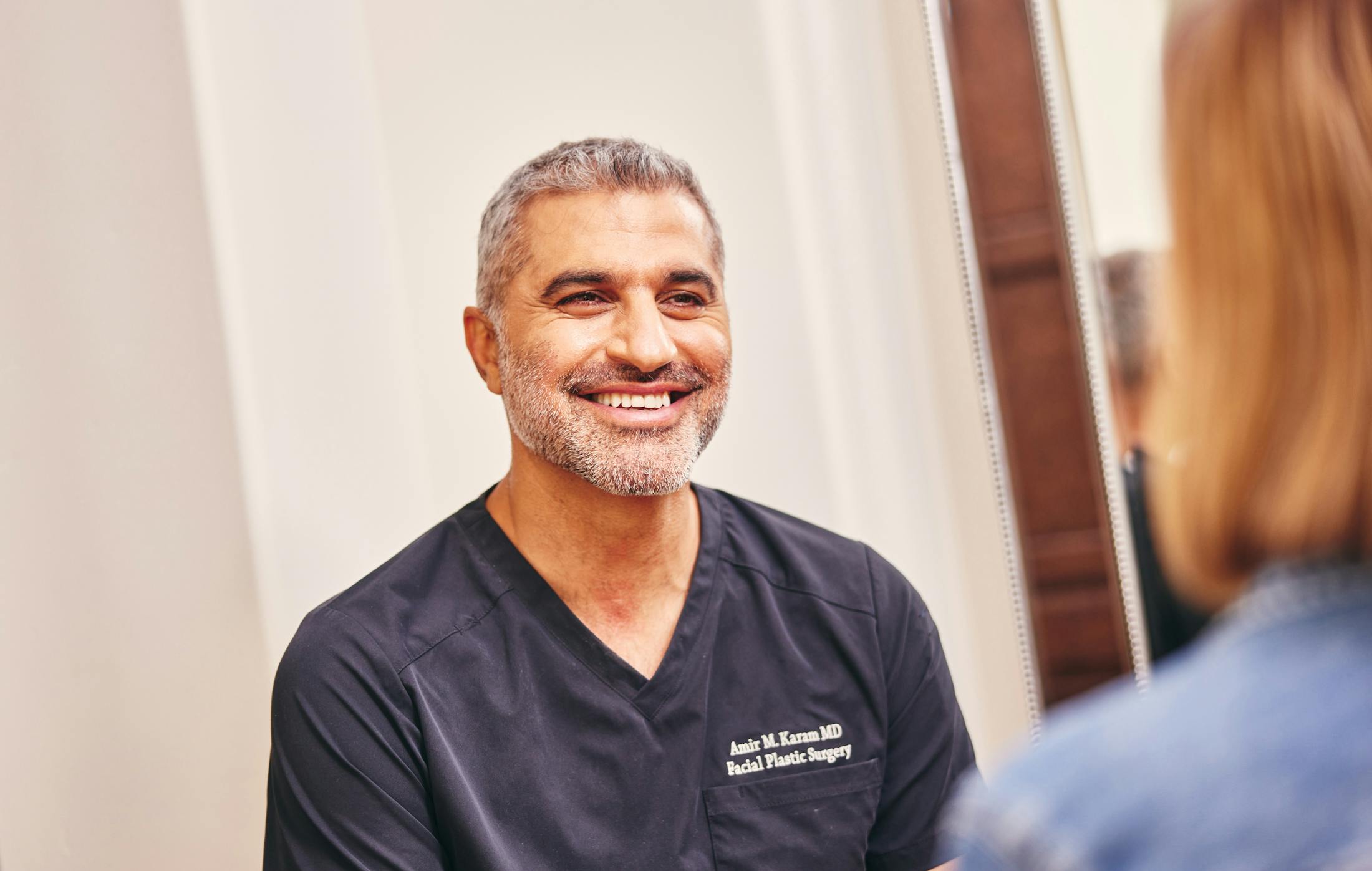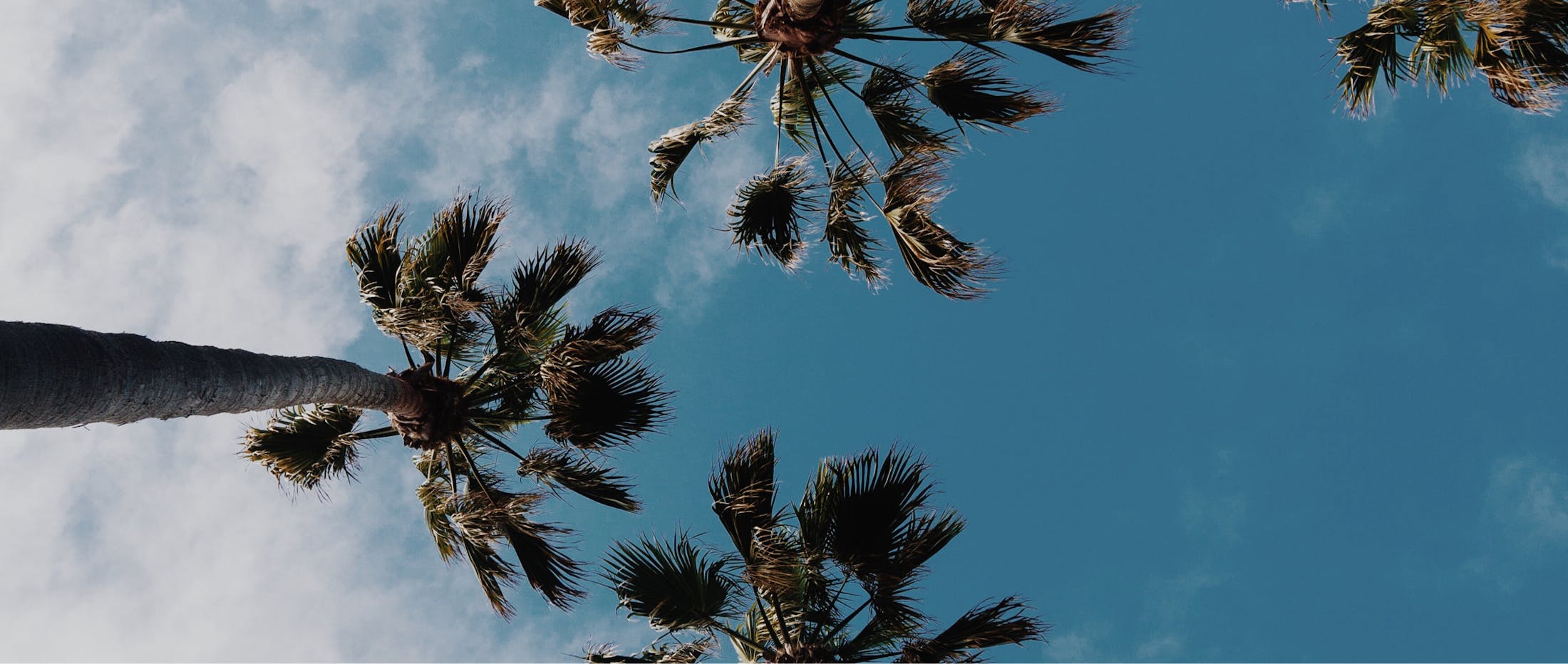How long will I be swollen?
The majority of swelling will settle between the first and second week. Swelling will continue to improve up to two months after the procedure; however, you should start to look like your normal self.
How does Dr. Karam know how much to inject and how much will I maintain?
Based on his experience from performing over 5,000 fat transfer cases, Dr. Karam determines how much fat to add based on how much of a deficiency there is to correct. Each case is unique and the amount of fat chosen is based on the individual patient and on the patient’s goal. Dr. Karam always errs on the side of under-filling as opposed to over-filling. This ensures a natural outcome. In general, most patients retain about 50% of the fat that is injected. In some rare instances, some patients may keep slightly less.
When can I wear eye makeup?
Patients are free to wear makeup 10 days after surgery. However, it is recommended that all incision lines only be covered with breathable makeup to allow for those areas to heal properly. Some common breathable makeup includes mineral makeup, such as Bare Minerals. We also sell a foundation called Oxygenetixs. Please be mindful to discontinue any products if your skin becomes red, itchy, and/or inflamed.
Why is my vision a little blurry?
Typically, this is because of the lubricant that is placed in the eye.
How does the doctor know where to make the incision? And why is one side healing faster than the other?
The incisions are made in the natural upper and lower eyelid crease (superior and inferior tarsal crease, respectfully). Be mindful that the natural crease in one eye may be higher/lower than the other eye. Incisions are closed exactly the same in every case and there is never a difference in technique between the 2 sides of the face, however, the two sides do heal differently. They eventually even out and look the same.
Why are the skin pinch incisions so low?
There are no sutures used on the face after a fat transfer procedure. You will have small “poke-sized hole” scabs that form where Dr. Karam injects the fat, but those usually go away on the third to fifth day. However, absorbable sutures are placed where we harvest the fat. These stitches will fall out on their own within 5- 10 days. It is recommended that sunscreen be used for the first year to prevent scarring.
Will the Browlift change the shape of my eyes?
The Browlift will not change the shape of your eyes. The purpose of the procedure is to simply lift the tail end of the eyebrows so they are no longer sagging and to make the transition from the facelift to the brow area more seamless so as to achieve that refreshed look.
How long will results last?
This is always a difficult question to answer because it is hard to define “lasting.” The real answer is that the procedure is permanent. However, aging does continue even after the procedure. The rate of your aging will be significantly slower once you have this procedure done. The average patient will feel satisfied with the results for 10-15 years.
When should I start using sunblock?
Sunblock is an important beauty element that should be part of your daily routine. Sunblock should begin 10 days after surgery and should be applied especially to the incision lines. Although sunblock should be part of your life-long beauty routine, it is particularly important the first year post-surgery or you run the risk of your incision lines discoloring. Please note that it is not necessarily the SPF that protects you but the Zinc Oxide of at least 9% AND Octinoxate of 7%. A good product line that carries those levels of protection is Obagi. Again, please be mindful to discontinue any products if your skin becomes red, itchy, and/or inflamed.
Is there a risk for nerve damage?
No, the technique that Dr. Karam performs purposely avoids the facial nerves.
Can I use scar gel to speed up the healing process of my incisions?
For patients who want to be proactive as possible, scar gel is a good option. We do recommend a medical grade scar gel that creates a silicone barrier over the incision line, such as BioCorneum.
How long before the bruises go away?
The yellow, green, and/or brown colorations you might see are signs that you are at the end of the healing phase. Bruises usually last days to weeks after the surgery. Eventually, everything is reabsorbed or excreted by the body and the bruises disappear.


